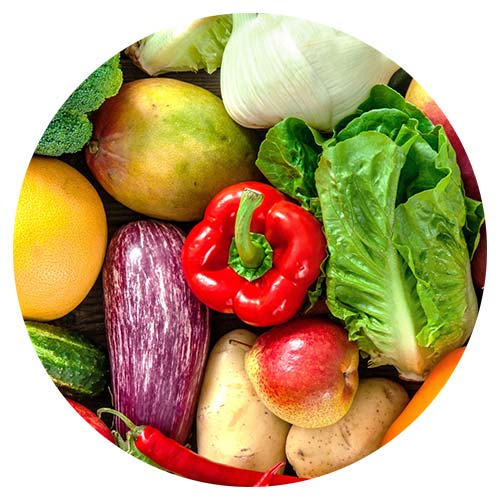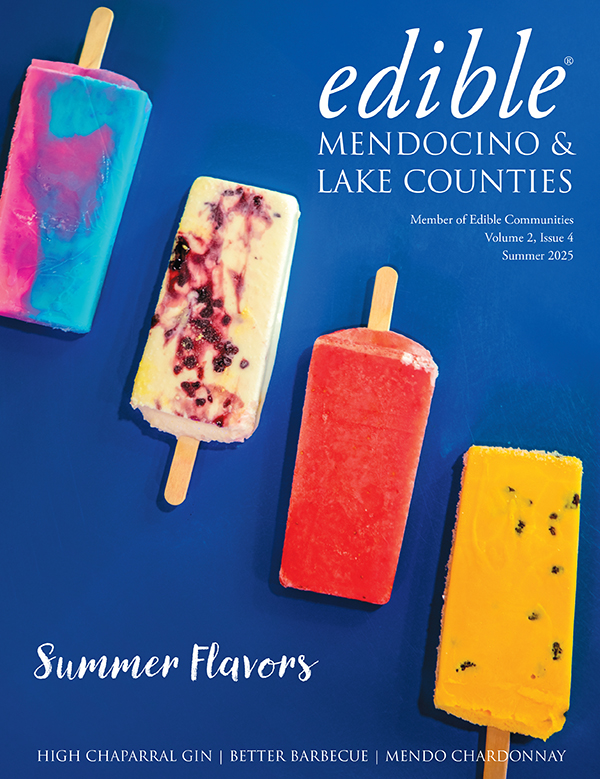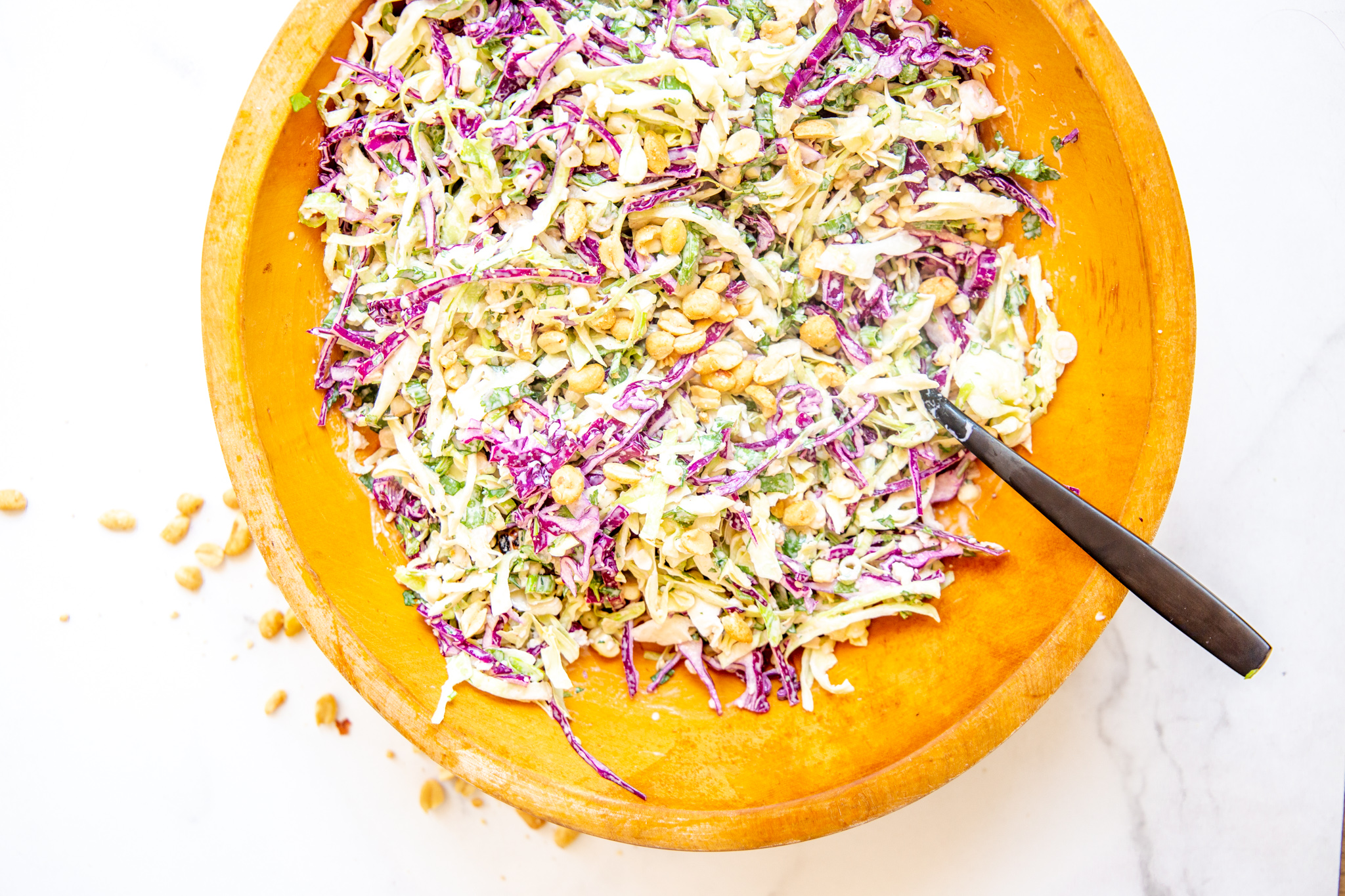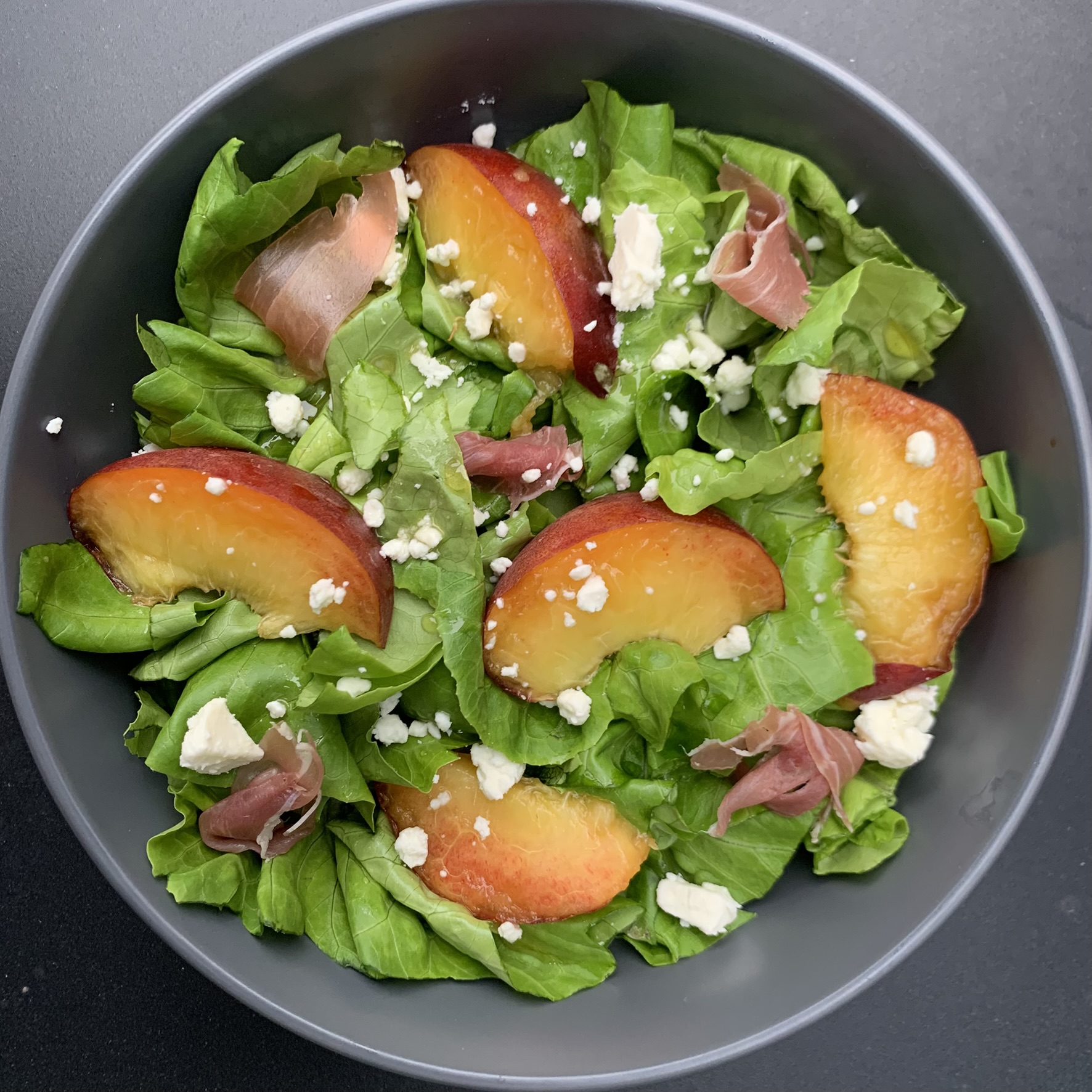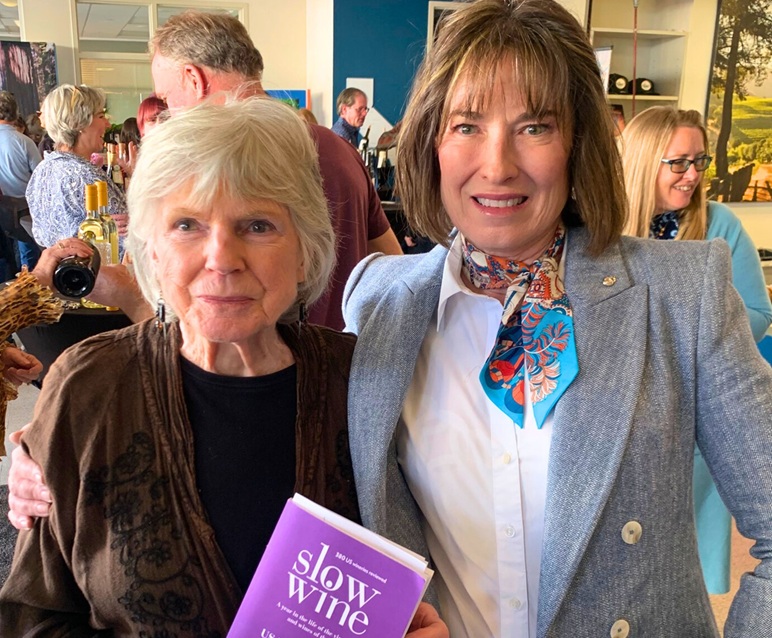New Executive Chef Patrick Meany launches a hyper-local culinary program at The Inn at Newport Ranch

Chef Patrick Meany’s morning commute to the kitchen at The Inn at Newport Ranch is anything but boring. Around 11:00 am he fires up his ATV, then zooms away from his house, which is located on a hill about a mile down the road from the ranch’s main building.
One of the first decisions he makes is which direction to head. Dozens of intersecting paths snake across the 2,200 acre property, which teems with hundreds of different types of edible plants, trees, herbs, grasses and fungi. Depending on what strikes his fancy, he’ll either power off into an old-growth redwood grove, through a shady creekside valley, or up a verdant, grassy hillside. The goal: to forage for something tasty that will add a dash of color, flavor or texture to the next night’s menu.
Menus are usually planned 24 hours in advance by Meany and sous chef Malinda Masing, based in part on what their foraging expeditions turn up.
“There is spontaneity based on what is out here,” said Meany. “Our native fruits and berries can be used for desserts, chickweed can be used as a garnish, green pine cones can be turned into syrup, and thistle can be used for rennet. Woods such as Douglas fir, applewood, and cypress can be used to smoke meat. There are so many things the land gives us that we can make flavors from that are representations of our one-of-a-kind location.”
Situated about 10 miles north of Fort Bragg in Kibesillah, a former lumber-processing hamlet, the property’s vast acreage affords sweeping views of the Pacific and an elevation differential of 1,200 feet from the shoreline to the top of the highest ridgeline. Highway 1 cuts through the ranch north to south, with dramatic ocean bluffs to the west, wide expanses of grazing land to the east, and miles of redwood-forested coastal mountains that extend well beyond the sightline.
The property is so large that it encompasses at least seven distinct microclimates and a wildly varied biome replete with an abundance of flora and fauna. It also contains two on-site cultivated gardens which supply the majority of the non-foraged vegetables, herbs, and flowers. There’s a small garden adjacent to the guest rooms in the main ranch area that Meany inherited from the prior culinary team, and a much larger garden about a half-mile down the road that he and Masing started building from scratch in the early spring.
The ability to forage and farm are two reasons that Meany was attracted to the job, and they are both essential to the new culinary program that he and Masing have been implementing since he was hired as the Inn’s new Executive Chef in February. The program is grounded in a “from-the-land” philosophy, with a goal of sourcing 80% of ingredients from what’s grown or foraged on the property.
Once both the cultivated gardens reach full production in late summer, this goal will become a reality. “By fall we will be rolling deep in vegetables,” he says gleefully.
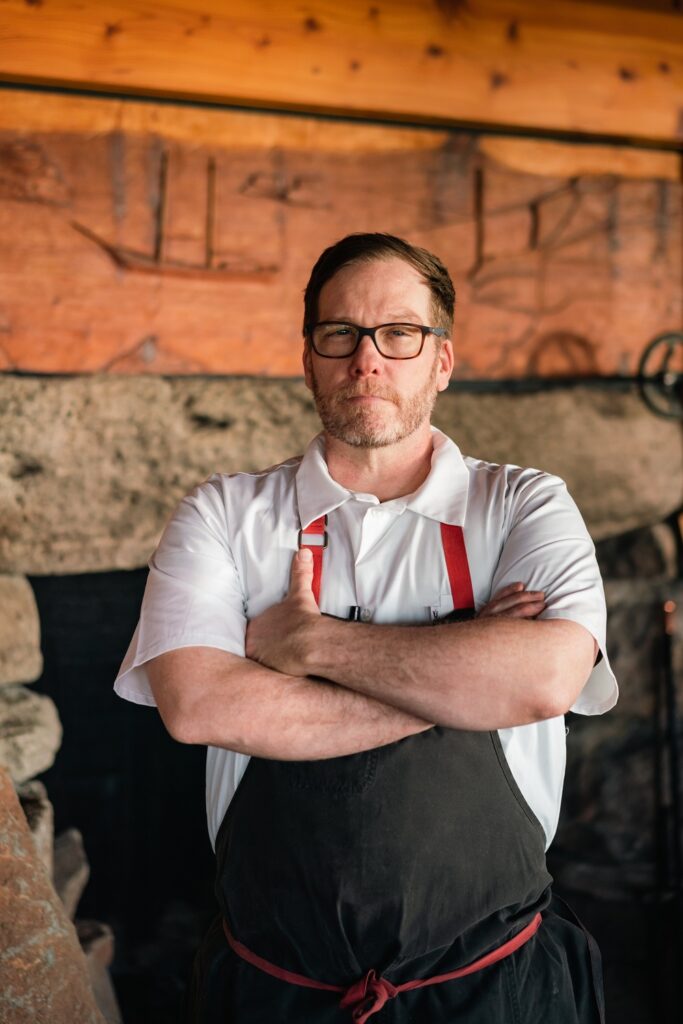
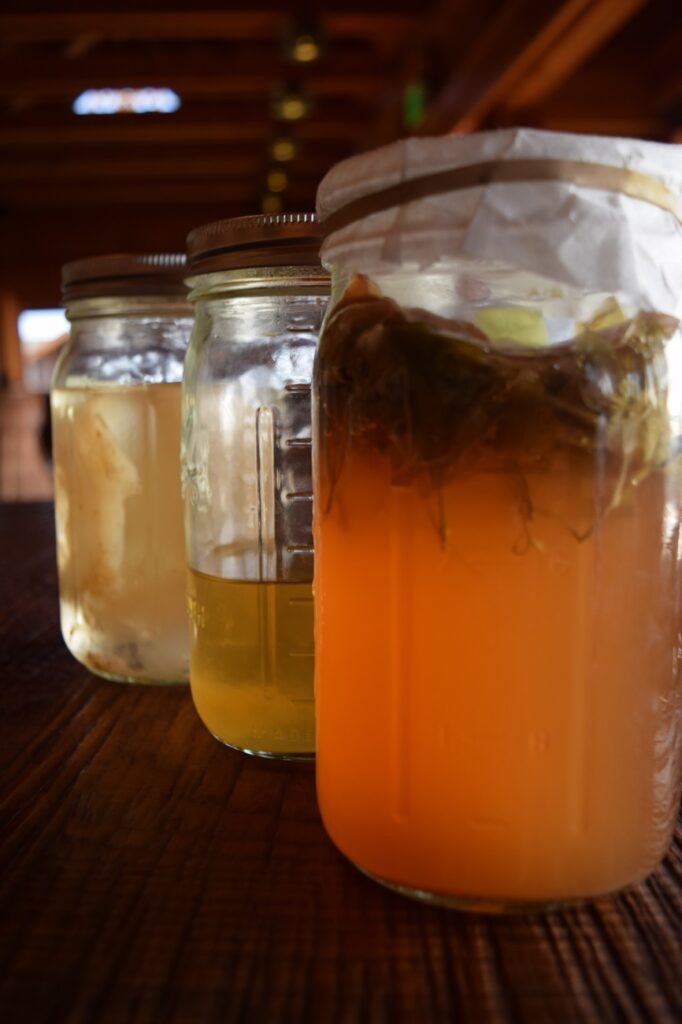
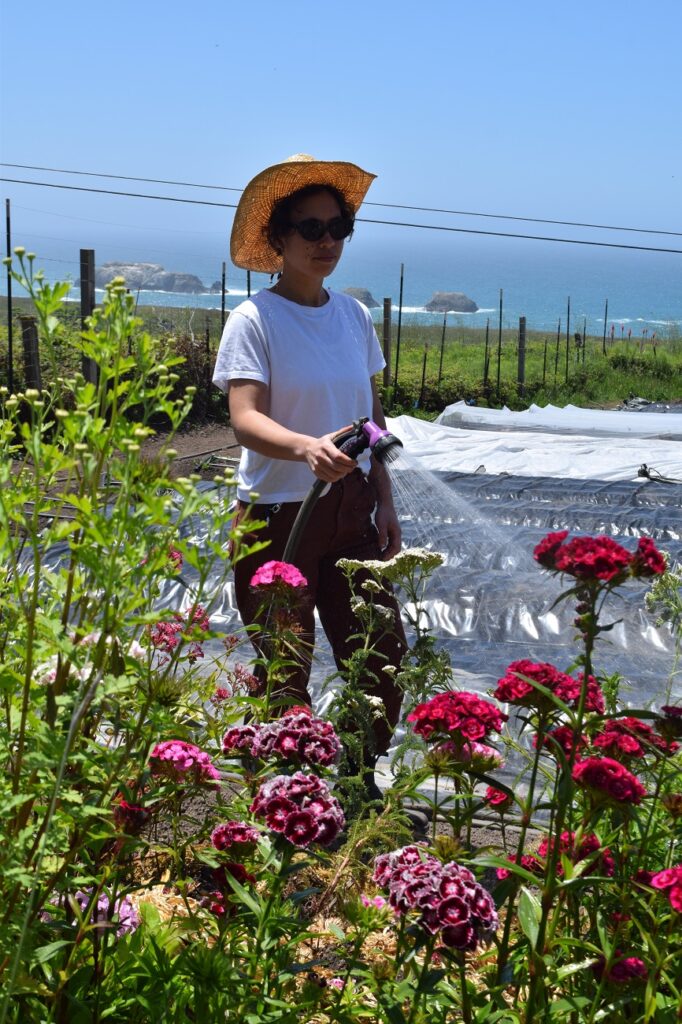
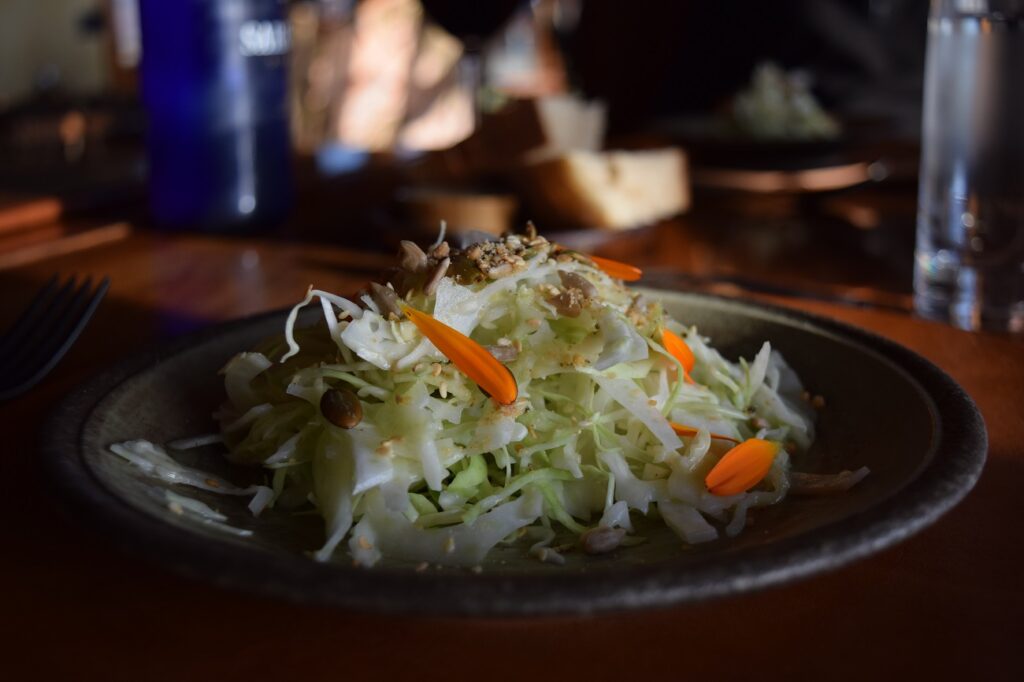
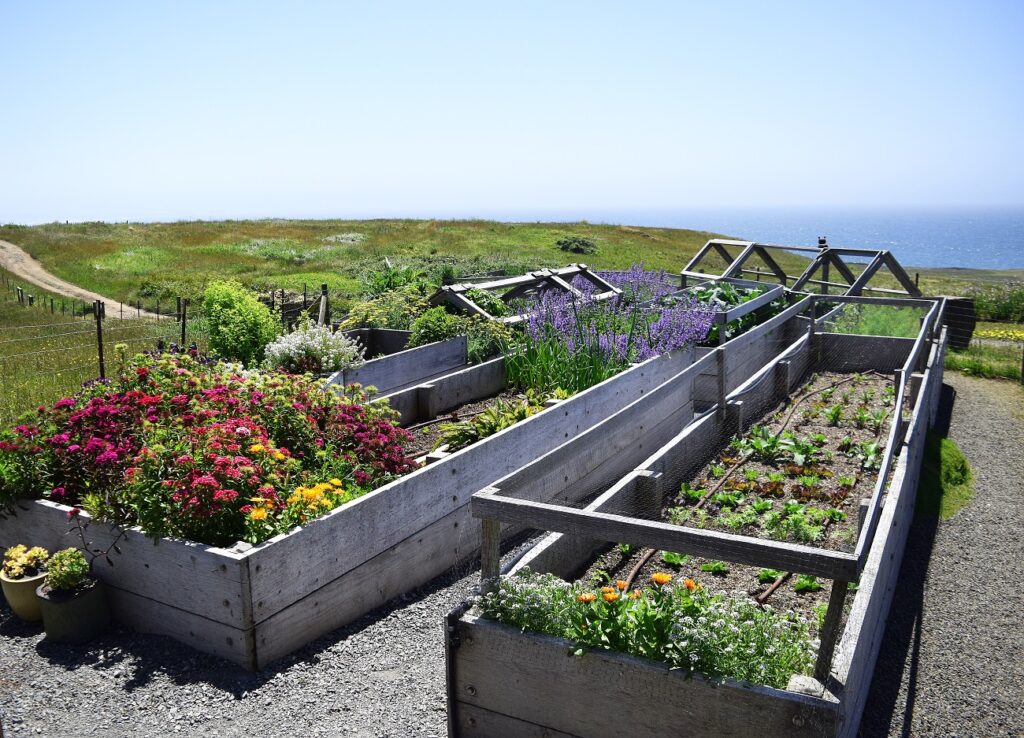
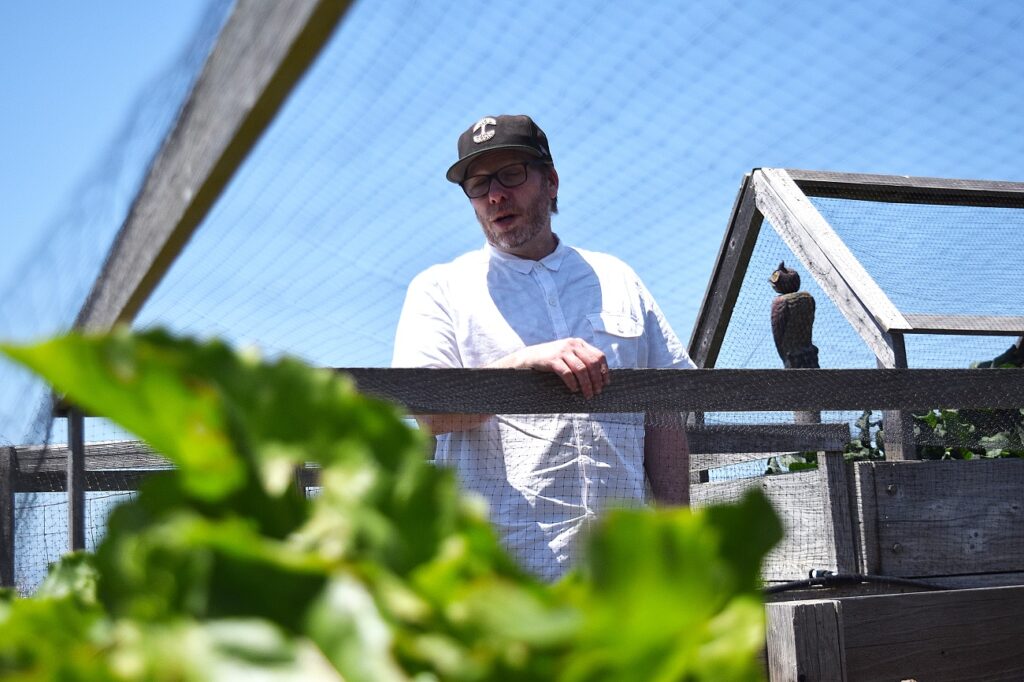
Although the foggy coastal climate and soil type is not ideal for certain types of plants, Meany intends to make the most of what does thrive there. That includes broccoli, cauliflower, cabbage, carrots, Brussels sprouts, kale, kohlrabi, daikon, radishes, fennel, lettuces and root vegetables.
“We have lots of lettuces,” he said. “We hit them pretty hard, and re-plant a lot. We’re also really proud of our flowering cauliflower —it’s super-cool. It’s different from what you see in grocery stores—it’s got long thin stalks that are more like a flower than a floret.”
What isn’t grown or found onsite is sourced from local producers, ensuring that Meany knows the provenance of 100% of the food served at the Inn.
“If you don’t know where your food comes from, you can’t speak to the quality of it,” Meany said. “It goes beyond the romance of it. It’s the real thing.”
There is something oddly romantic, though, about gazing out to sea during dinner and seeing the flashing light of the fishing boat that caught the cod that you are currently eating.
Meany says that when he first started working at the Inn, the fish was brought in from afar, and a guest complained that it was sub-par. Literally the next day Meany met Max, a local fisherman who works the waters between Fort Bragg and the Lost Coast. The two hit it off, and Max offered to supply the restaurant on a daily basis. He now brings in fish that’s so fresh it hasn’t even gone into rigor mortis yet. And yes, he can occasionally be seen plying his trade in the waters offshore from the Inn. It doesn’t get much more local than that.
Other proteins such as pork and lamb come from Mendocino and Sonoma county farms, and sustainable, grass-fed beef is sourced from Knights Valley Wagyu. Somewhat surprisingly, the Angus and Charolais cattle that graze at the ranch are not on the restaurant’s menu. The herd is owned by a private rancher who leases the land and raises the animals sustainably to a certain age, then sells them to a “finisher.”
“We’re working on a way to get the beef grazed on the property onto plates, but it’s a complicated process,” Meany said. “It’s on the list of things to try next year. Also, the herd is wild, not factory farmed, so it’s different from what diners are accustomed to. Since it has almost no fat on it, we’d have to think carefully about how to cook it to ensure that it tastes good.”
In the kitchen, Meany prefers to cook over live fire, using a combination of binchotan charcoal and alderwood. “I like the amount of smoke that alder produces,” he explained. “A ratio of 70% char-coal to 30% wood creates enough heat and enough smoke for a good balance.”
The open-flame technique exemplifies Meany’s belief that high-quality, flavorful food can be cooked in a simple and uncomplicated way.
“I’m not trying to reinvent the wheel and get carried away,” he said. “My philosophy is to cook as authentically as I can, using the elements of smoke and fire as foundations.”
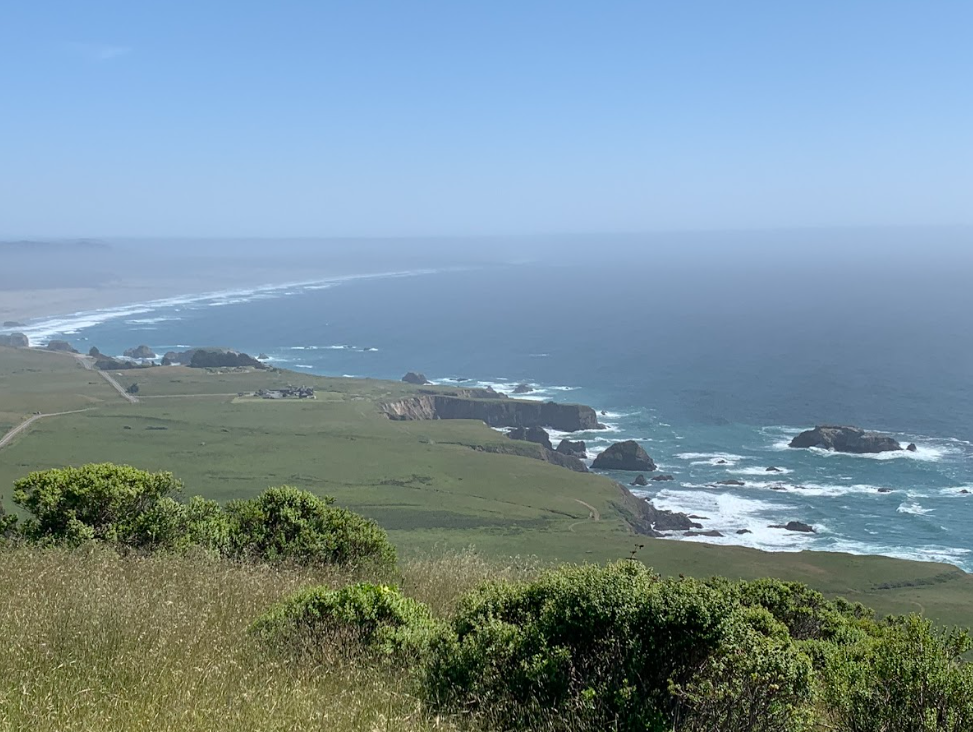


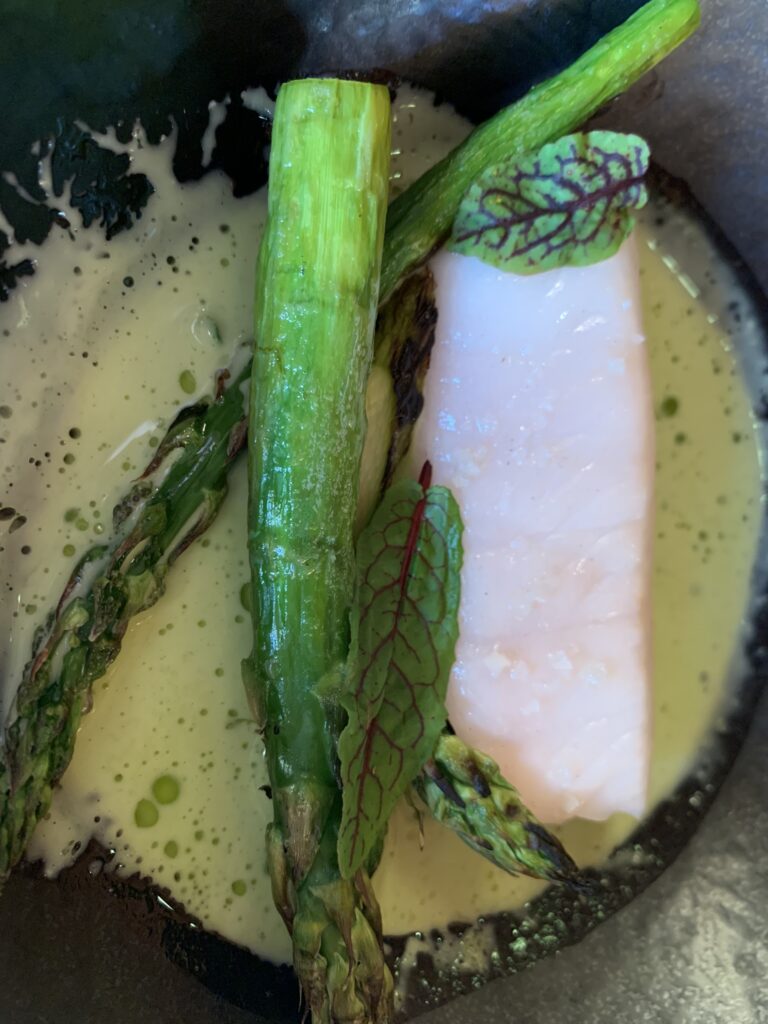
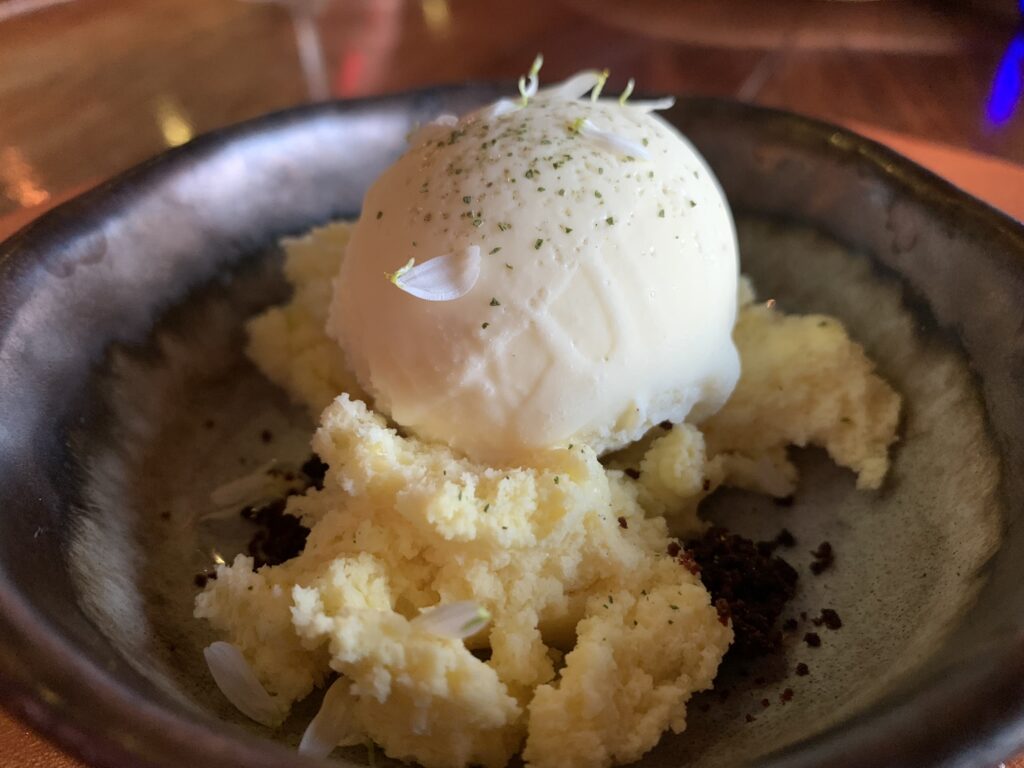
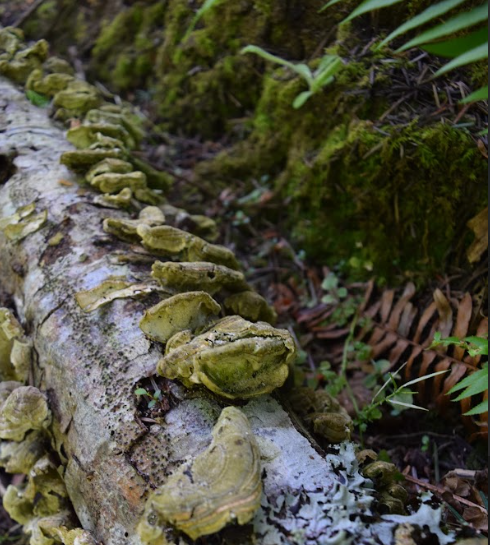
Though the techniques used to cook the food might not be complicated, the finished product is full of complex flavors and textures, and plated in a sophisticated and elegant manner. A typical menu might include a salad of finely shredded cabbage garnished with shaved fennel, barley vinaigrette and seeds; an appetizer of grilled cauliflower, broccoli and aioli; and sides of polenta with deli-cate swirls of thick brown butter and hearty house-made sourdough bread with freshly churned butter.
Mains might include tender black cod and grilled asparagus cooked over alderwood with seaweed vinaigrette, or confit of pork belly with kombucha glaze and beech mushrooms. For dessert there could be aromatic bay laurel ice cream with cheesecake and gooey caramelized cream.
If a farmed or foraged item somehow doesn’t make it onto a dinner plate, either due to excess supply or failure to fit into the flavor profile of the night’s menu, chances are it will end up in the house specialty beverage, kombucha. “A lot of times we’ll ferment things instead of letting them go to waste,” Masing said.
At any given time you’ll find kombucha flavored with huckleberries, salmonberries, California blackberries, Pacific waterleaf, bay laurel leaf, apple blossom, seaweed, or redwood sorrel, possibly with additional notes of Douglas fir needle or wild Newport honey. Fragrant, sharp and luminous, it’s worth trying even if you’re not normally a fan of the beverage.
Meany clearly enjoys his work—it’s obvious from the gleeful way that he stirs batches of kombucha, to the focused attention he gives to a simmering berry reduction, to the smile on his face when he finally finds a rare plant in an out-of-the-way spot on the property.
He was initially inspired to become a chef by his older brother, with whom he lived in Mississippi for a time as a teenager. He was a talented home cook who put a great deal of thought and intention into every recipe and prepared creative, healthy meals.
“The first time I made the connection between cooking and nurturing yourself was while watching my brother cook,” Meany said. “He was adamant about not eating fattening or processed food, and cooking everything himself. And he made it look fun!”
In the years since then Meany has developed an impressive resume, including past stints at the Harbor House Inn in Elk, positions with Thomas Keller’s Michelin-starred kitchens Per Se and Bouchon, and his own restaurant, Stone and Ember, in the Anderson Valley, where he first grew to love cooking over live fire. But the common themes that unite both his prior and current roles are authenticity, simplicity and an emphasis on local.
“I try to cook simply and not overthink things,” he said. “This is an amazing property that produces what we cook, so I try to approach each day with a fresh start and use what we have in the best way possible.”
The Inn at Newport Ranch is located at 31502 N Highway 1, Fort Bragg, CA 95437. All facilities and activities, including ATV tours, foraging tours, spa services, and dining at the restaurant are only available to overnight guests. To book a stay in one of the Inn’s 10 guest suites or for more information, visit TheInnAtNewportRanch.com. You can also make a reservation by calling (707) 962-4818.
